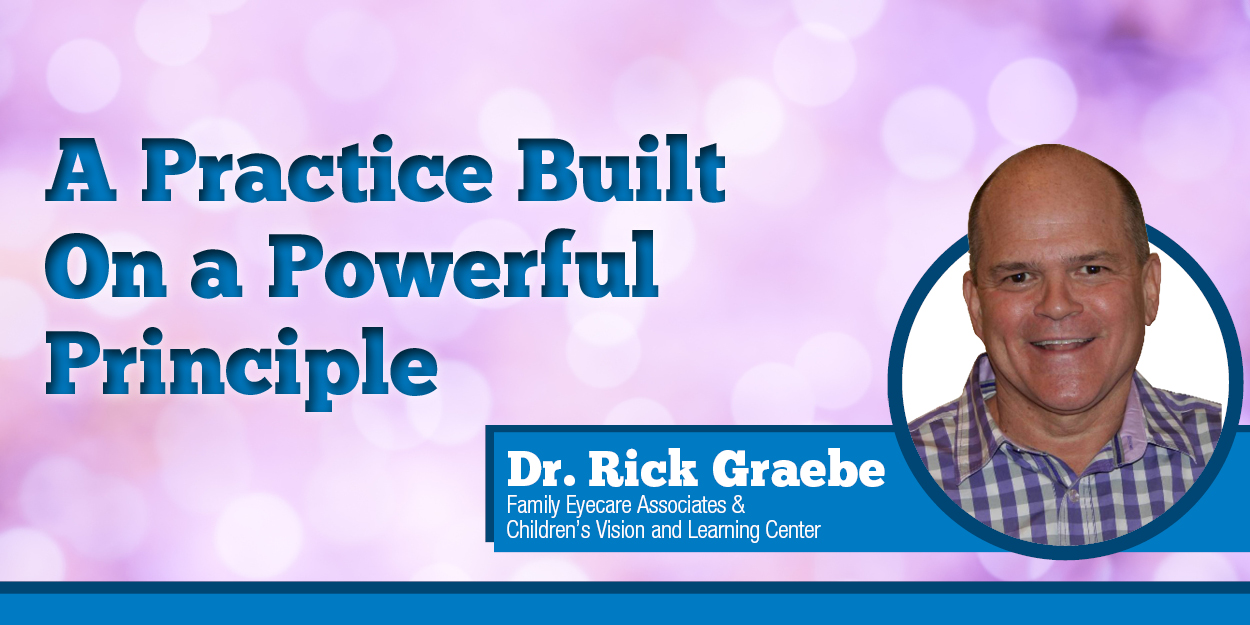The Golden Rule
The parent testimonials that trumpet the success of children and line one whole wall in Dr. Rick Graebe’s office in Versailles serve as a reminder of the underlying principle of his practice – the Golden Rule.
And what better time to celebrate treating others the way you’d like to be treated than the holidays?
“It’s gratifying to hear those testimonials and to know that we have made lifelong changes in people, because that’s why our office exists,” said Dr. Graebe, a behavioral optometrist who specializes in Vision Therapy.
“If I visited a doctor with a problem, I would want him to do everything he could to help me.
That’s what we try to do.”
And Dr. Graebe makes sure he backs up that claim by investigating every innovative and progressive technique that can help his patients.
Two examples: corneal molding and Vision Therapy. Years ago, Dr. Graebe noticed that some of his nearsighted patients struggled to play sports while wearing glasses, had trouble with their contact lenses or had worsening nearsightedness.
After extensive research, Dr. Graebe concluded that corneal molding was a problem solver for those patients. Corneal molding is a process of sleeping with specially designed corneal molds that change the curvature of the cornea and can eliminate nearsightedness.
Dr. Graebe followed a similar path with Vision Therapy. Even after he equipped some patients with the right corrective lenses, they still struggled with reading or suffered from headaches and/or clumsiness.
His research this time led him to Vision Therapy, a type of physical therapy for the eyes, brain and body that treats many common visual problems such as lazy eye, crossed eyes, double vision, convergence insufficiency and some reading and learning disabilities.
“I owe my patients two things – honesty and my very best effort,” Dr. Graebe said. “That means that I care enough to do my research so that I’m prepared when a patient has symptoms that require an out-of-the box solution.”
That’s why Graebe routinely logs more than 100 hours in classes and seminars each year– way beyond the required 17 hours of continuing education.
Along with traditional optometry classes, Graebe has pursued topics as diverse as occupational and physical therapy, nutrition, autism, dyslexia, learning disabilities, developmental delays and neuro-cognitive training. A particular favorite is the annual Neuro-Optometric Rehabilitation Association conference that brings optometrists together with neurologists, chiropractors, athletic trainers, PTs and OTs.
“My first class was taught by an optometrist, chiropractor, OT and PT and it blew me away,” Dr. Graebe said. “I heard all these different perspectives on patient issues. That’s what’s needed in healthcare – professionals working as a team in a multi-disciplinary setting. That’s what’s best for patients.”
It helps that Dr. Graebe has insatiable curiosity. He combines that with a desire to improve the lives of his patients.
“To help others, to lighten the load for other people, that’s where I get enjoyment,” he said.
His insistence on getting to the root cause of problems translates into success for his patients.
Just look at the wall of testimonials.
“I’m using the gift I’ve been given,” he says, “to help in my way to make the world a better place.”

